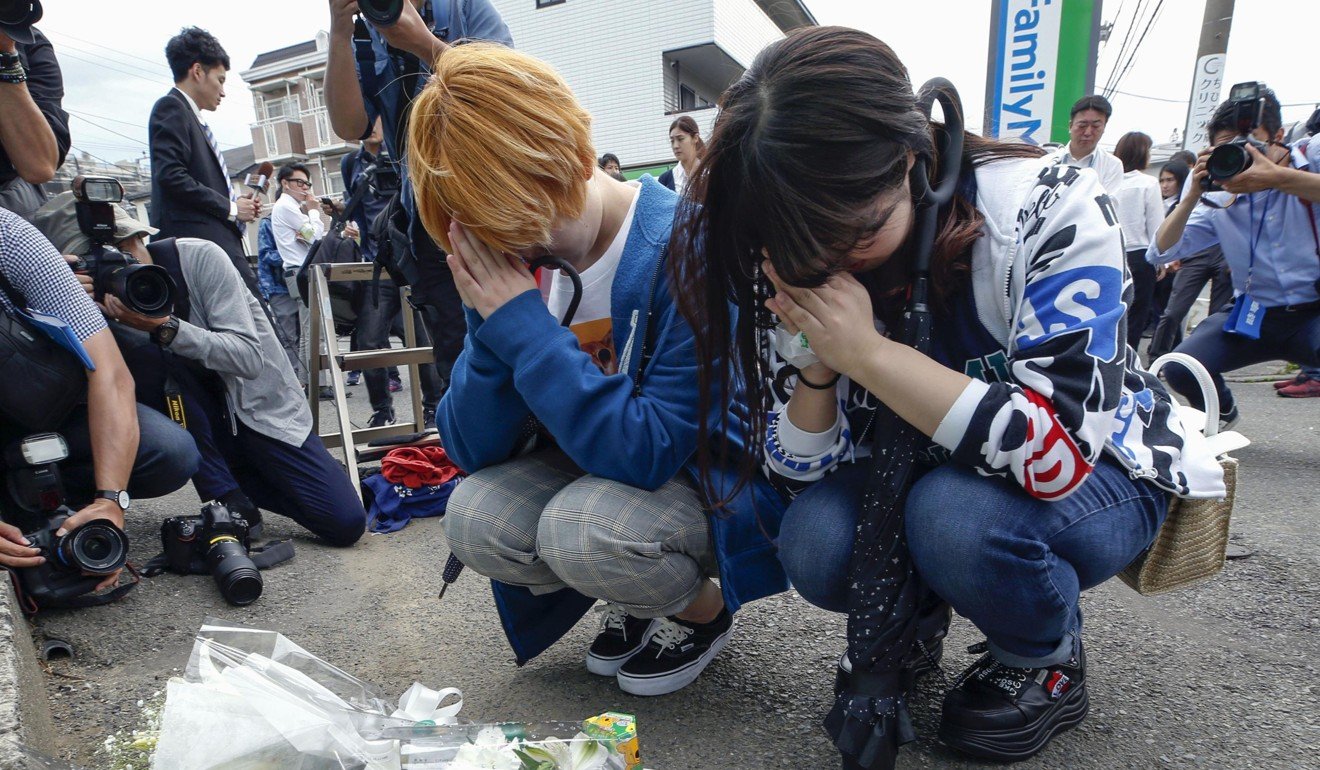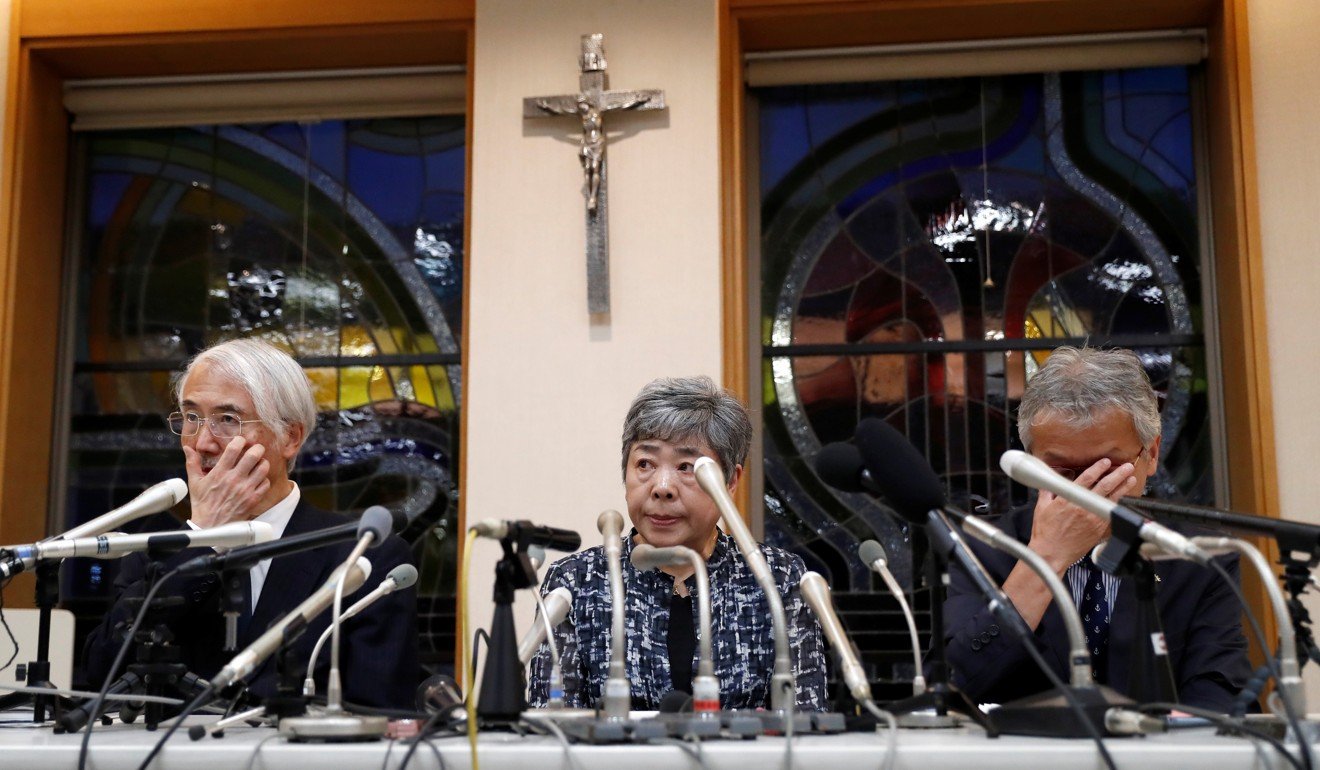
A history of ultraviolence against schoolchildren in Japan
- Japan is known for its low rate of violent crime. But Tuesday’s horror stabbing attack on schoolchildren was not the first such incident to shock the country
- Parents fear there is little that can be done to completely protect their children
But Japan is no stranger to such ultraviolence aimed at young children. Schools have in the past been armed with heightened security after similar incidents, most notably the killing of eight children at a school in Osaka in 2001 by a man with mental health problems.
Added security guards, volunteers lining the routes that children take to get to school, and strict intercom systems at all access points have been among the response measures. But parents fear there is little that can be done to completely protect their children.

“It could have been any of us and it could happen at any time,” said Wakako Uwabo, the mother of a six-year-old boy from Yokohama. “We will never know.
“Those children didn’t do anything wrong; they were not misbehaving or running off, but even so they are the victims,” she said. “And there were parents there as well and still they could do nothing.
“It’s shocking and it’s terrifying to think that it could have been us and it could happen again in the future.”
December 10, 2005 – Yu Hagino, a part-time teacher at a cram school in the Kyoto Prefecture town of Uji, got into an argument with 12-year-old student Sayano Horimoto during class. He dismissed the other students, disconnected a security camera and stabbed Horimoto repeatedly in the neck and chest.

It later emerged that Horimoto had complained to her parents that she was uncomfortable around Hagino, who had made “suggestive remarks” to her.
After his arrest, it was revealed that Hagino had a conviction for injuring a man in a fight and had been detained for a period of time at a mental hospital.
During the trial, Hagino said he was upset that the girl’s parents had made a complaint about his teaching and that he had hallucinated that Horimoto had attacked him with a dagger.
Sentenced to 18 years in prison, the term was reduced to 15 years on appeal.
February 14, 2005 – A 17-year-old boy entered Neyagawa Chuo Elementary School, in Osaka Prefecture, and used a sashimi knife to stab a male teacher to death and injure two female members of staff. No students were hurt in the incident.
The young man – not named because he was a minor at the time – lived locally and had attended the school.
He avoided school security by using the intercom at the school gate, identifying himself and asking for a teacher by name. He was allowed into the premises and met by male teacher Mitsuaki Kamozaki, whom he killed before stabbing the two women inside the school building.

June 1, 2004 – A girl aged 11 at Okubo Elementary School, in the city of Sasebo, Nagasaki Prefecture, slashed the throat of a 12-year-old classmate, Satomi Mitarai, with a craft knife. The incident happened during the lunch break with “Girl A”, as she is legally referred to, entering Mitarai’s classroom and killing her before returning to her own classroom.
During questioning, the girl said she was sorry. She claimed she had argued with Mitarai over internet messages in which the victim allegedly mocked her weight and called her a “goody-goody”.
Sentenced to four years in a reformatory, Girl A was subsequently diagnosed with Asperger syndrome. She was released in May 2008.
It’s shocking and it’s terrifying to think that it could have been us and it could happen again in the future
June 8, 2001 – Shortly after 10am, former janitor Mamoru Takuma entered Ikeda Elementary School, in Osaka Prefecture, and used a knife to kill eight children and seriously injure another 13, as well as two teachers. Nearly all the children were aged seven or eight.
The attack was the fifth-largest mass murder in recent Japanese history, but stands out because of the age of the victims, the place where the attack took place and the perpetrator’s history of mental illness. The incident raised questions about the way in which Japan cares for people with mental illness, as well as security at Japanese schools.
Diagnosed with paranoid personality disorder, Takuma was convicted and sentenced to death. He was executed on September 14, 2004.

March 16 and May 27, 1997 – When the first teacher arrived at Tomogaoka Junior High School in Kobe on May 27, 1997, he initially thought the head placed in front of the school gate was a dummy left as a prank.
It turned out to be the head of an 11-year-old boy named Jun Hase, who was killed, beheaded with a saw and mutilated. A note written in red ink and stuffed in the victim’s mouth, was left for police to find and identified the killer as “Sakakibara”.
Over the following weeks, the killer taunted police and local media with a series of letters in which he threatened to kill more people. He was arrested almost exactly one month later.
Japan was shocked to discover that the perpetrator was a 14-year-old boy who had also killed 10-year-old girl Ayaka Yamashita with a hammer in March that year.
Convicted as “Boy A” and never officially named, he was detained until 21 years old then released and relocated.
In 2015, Boy A released an autobiography that attracted widespread attention, partly as a result of efforts by the families of the victims to block its publication.
A few months later, he set up a vanity website with nude images. In protest, the tabloid Shukan Post printed his new identity, his occupation and his location.

